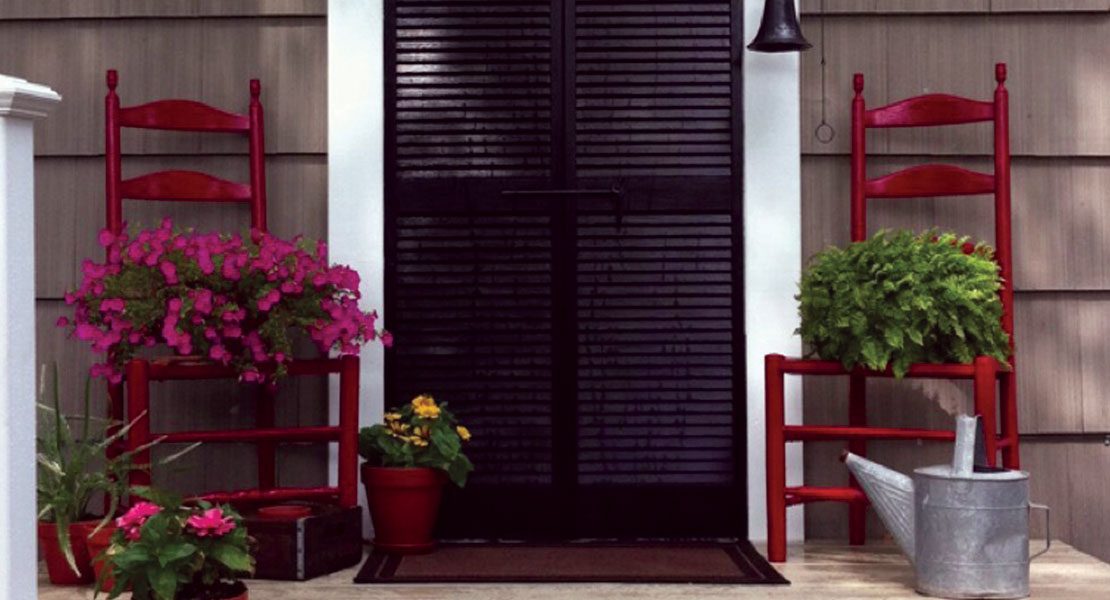Small Space Solutions

By Kathryn M. D’Imperio
Some people have an eye for design while others may not know where to start. And then, there are the professionals who can turn any living space into a masterpiece, working with colors, textures, patterns and styles to create sensorial perfection in every room. If design is not your forte, these experts make it easy to convert an average room into something truly dazzling.
It may seem the sky’s the limit with open, airy homes boasting spacious rooms and dramatic architectural enhancements, but when it comes to smaller spaces, the decorating process may seem a bit trickier. The wonder of interior design is that you can use your imagination and choices from an endless list of furnishings and accessories to create beauty that is scaled up or down and customized to fit just about any dimensions.
Audra Hill, Interior Designer at Gail Gray Home Furnishings and Design at The Promenade Shops at Saucon Valley, embraced design from an early age and has grown her craft as a professional for the past 18 years. Hill’s father worked as a draftsman at Bethlehem Steel before it closed, instilling drawing and technical skills upon his daughter as she watched him work. She initially thought she might pursue work as an architect, but her creativity and love of color, fabrics and accessories pulled her into the world of interior design.
“Interior design was a natural place for me to go,” Hill says. “I love working with the homeowner to make their homes everything that they dream it to be.”
Living Large in a Small Space
Those looking to make the most of designing a small living space should start small and remain focused. Small space decorating isn’t rocket science, but some of the best tips out there – smart and simple – may still surprise you.
“Choose your possessions wisely,” Hill advises. “When living in a small space, not a single inch can be sacrificed to clutter. Natural light and abundant windows are important to help the space not feel claustrophobic. Use your vertical space for storage needs. Remember every inch is usable design space.”
She also recommends “double duty furniture” for efficient use of a small space. Sofas that convert to a bed may be a nice option to open up your home for overnight guests while keeping the overall design true to your desires. A console that collapses together but opens to a full-size table for dinner may be another option to make the most of a smaller living space.
“Color combinations with negative space in between will enhance the space’s clarity and openness,” Hill says. “Bring splashes of color in to create excitement and depth to a room. If you’re lucky enough to have a foyer or hall, paint that a dark color and ease into lighter shades in the living room, which will make it feel more spacious by comparison. Another way to look at color in a small space is to think how your eye follows the space in the room from floor to ceiling. Keep the colors in the space in the same color family or tone. By keeping the three surfaces in the same color family, the space will visually open up as they recede, creating the illusion of more space.”
She suggests attempting this colorful technique visually using area rugs, window treatments, and paint or wall coverings in a complementary color family. Regarding window treatments, Hill recommends choosing simpler styles that will gently frame the windows, allowing the curtains to “blend harmoniously with the wall rather than visually breaking up the wall.”
Another interesting concept Hill shared is to keep the feel of the rooms open and welcoming. Choose furniture with minimal arms or no arms for smaller rooms.
“Armless pieces allow the room to breathe without creating boundaries, resulting in keeping an open and airy space with an ample amount of seating,” she explains.
Accessorizing a Small Space
Enhancing rooms with accessories is half the fun of decorating! Smaller spaces typically require fewer pieces to attain that polished look we all desire. To make the most of smaller rooms in your home, Hill advises going vertical and using all the available space you have. Tall shelving, for example, gives you a place for your most beloved accessories and possessions while also creating storage.
With that in mind, it is worth mentioning that smaller spaces are less forgiving if you happen to go overboard with accessories.
“Knickknacks and accessories are great to add color to a space, but in a small space they need to be kept to a minimum so it doesn’t look or feel cluttered,” Hill says.
Regardless of room size, plants can make a living space seem more vibrant and alive, adding a natural element that exudes softness and life. Think creatively and visually on placement of plants, but make sure you choose the right location based on each plant’s requirements for light or shade.
To further maximize the decorating appeal of smaller spaces, Hill suggests some seasonal decorating tips to keep things fresh and fun. Some of her favorite tips are changing out the pillows and area rugs, as well as adding colorful vases to add huge impact to the look and feel of the space. Still, remember not to overcrowd the available space you have with too many decorative items.
“Managing clutter is not much different from dark walls when it comes to a small space,” Hill says. “If you walk into a room crammed with furniture, overrun with knickknacks and collectibles, it will feel like it is closing in on you. To keep the open feel, pick a few cherished items and display them creatively. Accessorize a bookcase or a console. Then rotate items out throughout the year. Less is more when it comes to furnishing and accessorizing a small space.”
Creating Illusions in Small Spaces
Create an open, airy feel in a small space.
Residential and Commercial Interior Designer JT Norman has more than 20 years of design experience and recently refurbished his 1960 cape inside and out. Norman says his family’s talents in music, art, and design helped to fuel his longtime passion for design. Here are a number of his favorite tips on creating illusions in small spaces.
“The advice that I would give to help someone make the most of a small living space would be to design with the ideas of function first, storage second, followed by textile choices, illusion and lighting,” says Norman. “For example: Illusion can be in the form of using mirrors and artwork (preferably landscapes or seascapes) that give the perception of depth that a window would provide.”
Textiles
• Use glass for transparency, such as glass tables.
• Choose Lucite accessories and furniture to further help with transparency.
• Opt for stripes in fabrics and wall coverings, using horizontal stripes to make the space look wider and vertical stripes to make it appear grander.
• Likewise, select vertical window treatments to accentuate the height of the room. Place the treatment higher than the window for an illusion of added height.
• Alternatively, opt for no window treatment to allow maximum light into the space.
• Affix retractable window coverings that stay hidden until you need them for privacy without distracting from your décor.
Lighting
• Use light to create different moods while also providing for function.
• Consider adding dimmer switches to give great control over both mood and utility.
Floors
• Keep the flooring flowing smoothly from room to room. This creates continuity of the space and makes the different areas in the home feel connected.
• Avoid isolating a space by choosing different flooring than adjoining spaces.

















